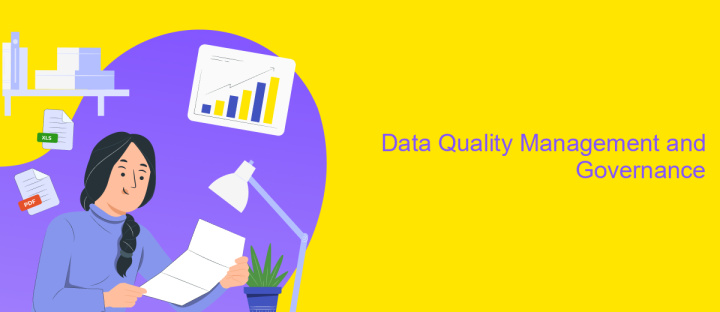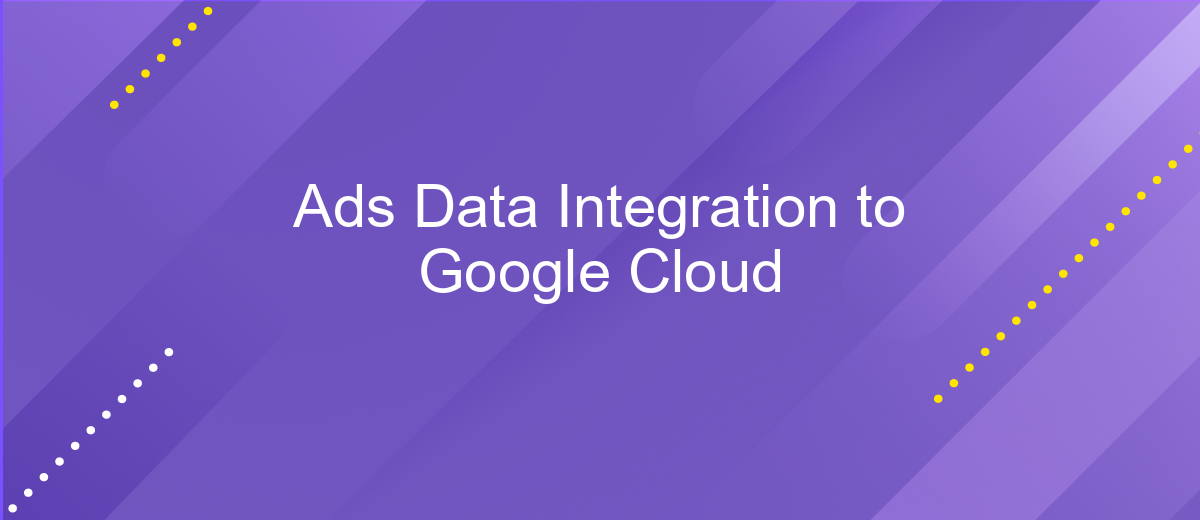Ads Data Integration to Google Cloud
Integrating ads data into Google Cloud offers businesses a powerful way to consolidate, analyze, and leverage their advertising insights. By centralizing data from various ad platforms, companies can gain a comprehensive view of their marketing performance, optimize campaigns, and make data-driven decisions. This article explores the benefits, methods, and best practices for seamless ads data integration into Google Cloud.
Introduction
In today's data-driven world, integrating advertising data into a centralized cloud platform is crucial for businesses aiming to maximize their marketing efforts. Google Cloud offers a robust and scalable solution for this purpose, enabling organizations to consolidate, analyze, and act on their advertising data efficiently. By leveraging Google Cloud's suite of tools and services, companies can gain deeper insights into their ad performance, optimize campaigns, and drive better business outcomes.
- Centralized data storage for seamless access and management
- Advanced analytics and machine learning capabilities
- Automated data pipelines for real-time insights
- Enhanced security and compliance features
- Scalable infrastructure to handle large data volumes
Integrating ads data with Google Cloud not only simplifies data management but also empowers businesses to make data-driven decisions. This integration provides a comprehensive view of marketing activities, allowing for more precise targeting and improved ROI. As a result, organizations can stay competitive in the fast-paced digital advertising landscape, ensuring they reach the right audience with the right message at the right time.
Benefits and Use Cases

Integrating ads data into Google Cloud offers numerous benefits, including centralized data storage, enhanced analytics, and improved decision-making. By consolidating data from various ad platforms, businesses can achieve a holistic view of their marketing efforts. This integration allows for advanced data processing and machine learning capabilities, enabling more accurate predictions and insights. Additionally, it facilitates real-time data updates, ensuring that marketing strategies are based on the most current information available.
One practical use case is leveraging services like ApiX-Drive to streamline the integration process. ApiX-Drive automates data transfers from multiple ad platforms to Google Cloud, reducing manual effort and minimizing errors. This is particularly useful for businesses managing multiple ad campaigns across different channels. Another use case involves using integrated data for personalized marketing. By analyzing customer behavior and ad performance data, businesses can tailor their marketing strategies to individual customer preferences, leading to higher conversion rates and improved ROI.
Data Integration Techniques and Tools

Integrating ads data into Google Cloud can significantly enhance your data analytics and decision-making processes. By leveraging various techniques and tools, businesses can streamline this integration, ensuring data is accurate, timely, and actionable.
- Data Transfer Service: Automates the transfer of data from various sources directly into BigQuery, Google's fully-managed data warehouse.
- Cloud Pub/Sub: Facilitates real-time messaging between applications, enabling the seamless ingestion of streaming data.
- Cloud Dataflow: Provides a unified stream and batch data processing service, ideal for transforming and enriching ads data.
- BigQuery Data Transfer Service: Specifically designed for moving data from external SaaS applications like Google Ads into BigQuery without writing a single line of code.
- Cloud Composer: A fully managed workflow orchestration service that helps schedule and monitor complex data pipelines.
Using these tools, businesses can efficiently manage the end-to-end process of ads data integration. This ensures that all relevant data is consolidated in a single platform, making it easier to perform comprehensive analytics and derive actionable insights.
Data Quality Management and Governance

Ensuring data quality and governance is paramount when integrating ads data into Google Cloud. High-quality data enables accurate analysis, leading to better decision-making and optimized ad strategies. Implementing robust data governance frameworks helps maintain data integrity, security, and compliance with regulatory standards.
To achieve this, organizations should establish clear data quality metrics and continuously monitor data for accuracy, completeness, and consistency. Automated data validation processes can identify and rectify errors in real-time, ensuring that only reliable data is used for analysis and reporting.
- Define data quality standards and metrics
- Implement automated data validation and correction processes
- Conduct regular data audits and quality assessments
- Establish data governance policies and procedures
- Ensure compliance with regulatory requirements
By prioritizing data quality management and governance, organizations can maximize the value of their ads data in Google Cloud. This approach not only enhances the reliability of insights derived from the data but also builds trust with stakeholders and ensures long-term success in data-driven advertising initiatives.
- Automate the work of an online store or landing
- Empower through integration
- Don't spend money on programmers and integrators
- Save time by automating routine tasks
Best Practices and Recommendations
When integrating ads data into Google Cloud, it is essential to ensure data accuracy and consistency. Use robust ETL (Extract, Transform, Load) processes to clean and transform data before loading it into Google Cloud. Regularly monitor and validate the data to detect and correct any discrepancies. Utilize Google Cloud's built-in tools like BigQuery for efficient data analysis and Cloud Storage for secure data storage. Implementing proper access controls and encryption will also enhance data security and compliance.
To streamline the integration process, consider using services like ApiX-Drive, which can automate data transfer between your ad platforms and Google Cloud. ApiX-Drive supports a wide range of integrations and can simplify the setup, reducing manual efforts and minimizing errors. Additionally, schedule regular data syncs to ensure your data remains up-to-date. By following these best practices, you can optimize your ads data integration, leading to more accurate insights and better decision-making.
FAQ
What is Ads Data Integration to Google Cloud?
Why should I integrate my ads data with Google Cloud?
What types of data can be integrated into Google Cloud?
How can I automate the integration of ads data to Google Cloud?
What are the benefits of using a third-party service for ads data integration?
Time is the most valuable resource for business today. Almost half of it is wasted on routine tasks. Your employees are constantly forced to perform monotonous tasks that are difficult to classify as important and specialized. You can leave everything as it is by hiring additional employees, or you can automate most of the business processes using the ApiX-Drive online connector to get rid of unnecessary time and money expenses once and for all. The choice is yours!


